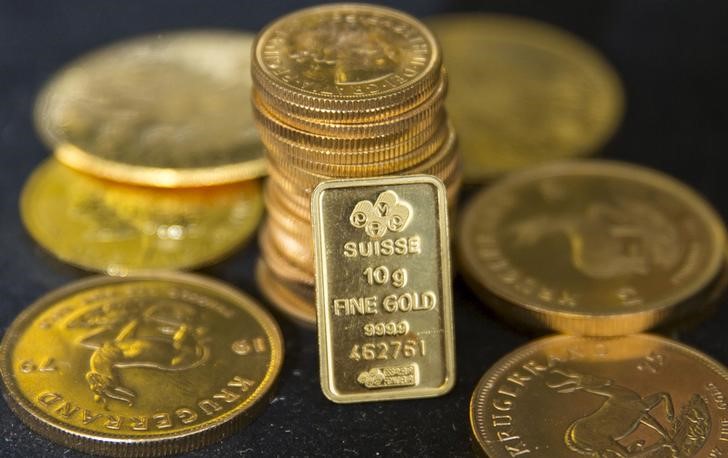Investing.com — Gold prices rose slightly on Thursday, supported by slowing U.S. inflation data from the previous session, which reinforced expectations of a Federal Reserve rate cut in December.
While the Fed is widely expected to make a third rate cut next month, minutes of its November meeting released Tuesday show differing opinions among officials on the size of future rate cuts.
rose 0.4% to $2,645.73 per ounce, while February expiration rose 0.2% to $2,669.41 at 07:10 ET (12:10 GMT).
Strong PCE and GDP data raise doubts about rate cuts
The numbers — the Fed’s preferred inflation measure — rose as expected in October, moving further above the central bank’s annual target of 2%. These figures were accompanied by data showing steady growth in the third quarter, as well as slightly stronger-than-expected weekly data.
While the data did little to deter expectations for a rate cut in December, investors still saw growing uncertainty about the 2025 interest rate outlook.
Uncertainty over a Donald Trump presidency added to the mix as he is expected to issue more expansionary policies and trade tariffs that will drive up inflation.
This trend is expected to limit the Fed’s easing cycle. Analysts at UBS said in a recent note that the central bank will slow its rate cuts to once a quarter in 2025, and also forecast a higher final rate.
Higher rates do not bode well for non-yielding assets like gold.
Other precious metals also fell on Thursday and have seen steep losses in recent weeks. remained stable at $933.65 per ounce, while the price fell 1% to $30.523 per ounce.
Copper prices are weak and more signals await from China
Among industrial metals, copper prices were little moved after suffering steep losses in recent sessions, with the focus shifting to more economic signals from top copper importer China.
The benchmark on the London Metal Exchange fell 0.5% to $8,978 per tonne, while February was steady at $4.1238 per pound.
The red metal has been under pressure on growing fears of a Sino-US trade war after newly-elected US President Donald Trump threatened to impose more tariffs on China.
Traders also waited to see what stimulus measures Beijing will take to offset the economic pressure from possible higher US tariffs.
Chinese figures for November will be released on Saturday and will provide more clues about the economy.
(Ambar Warrick contributed to this article)


